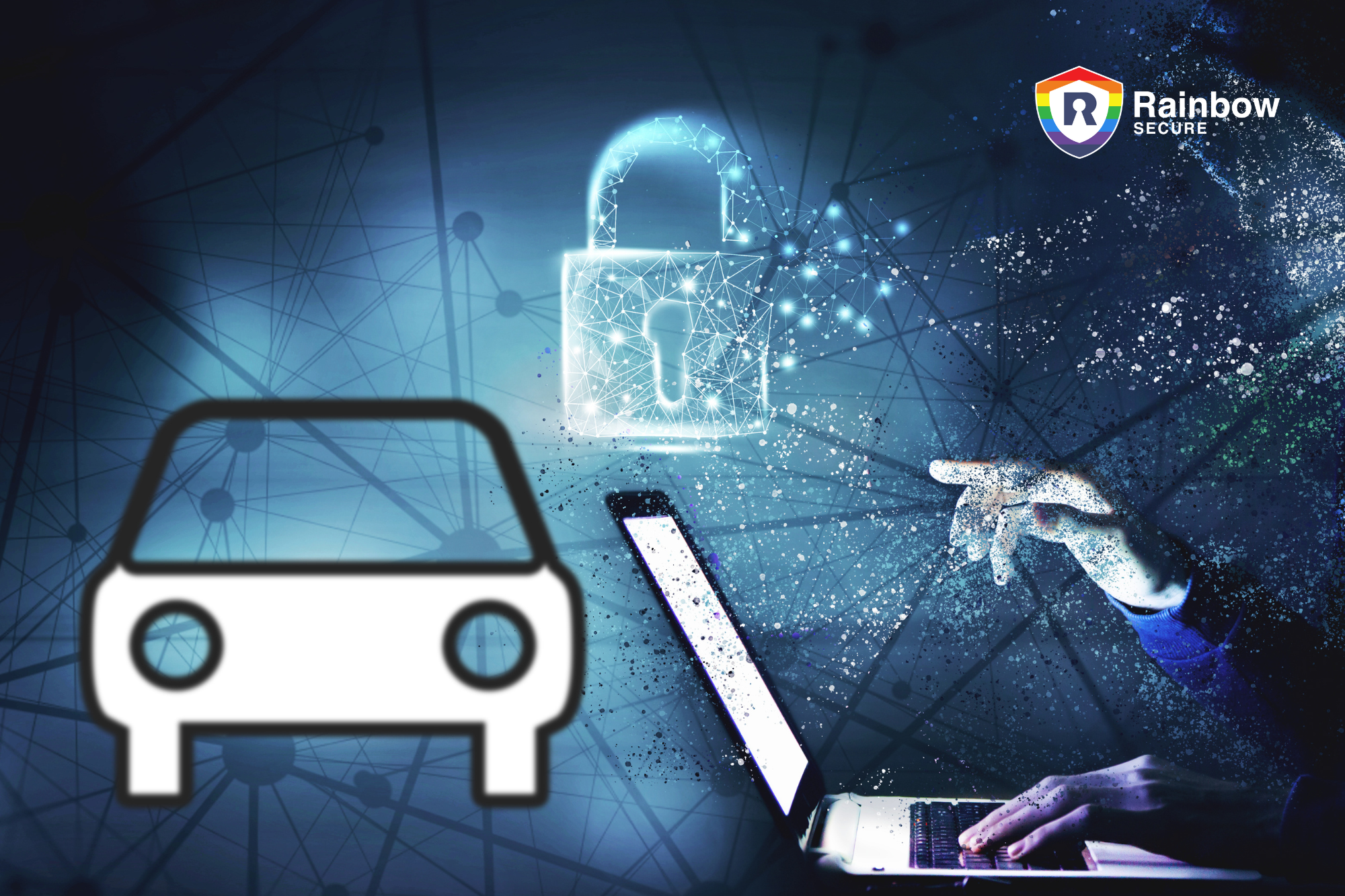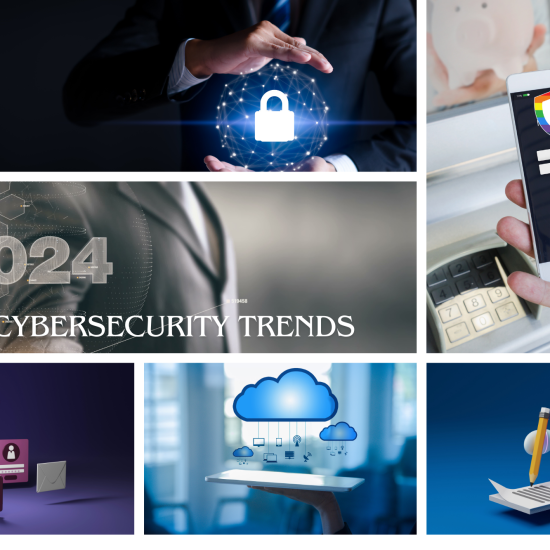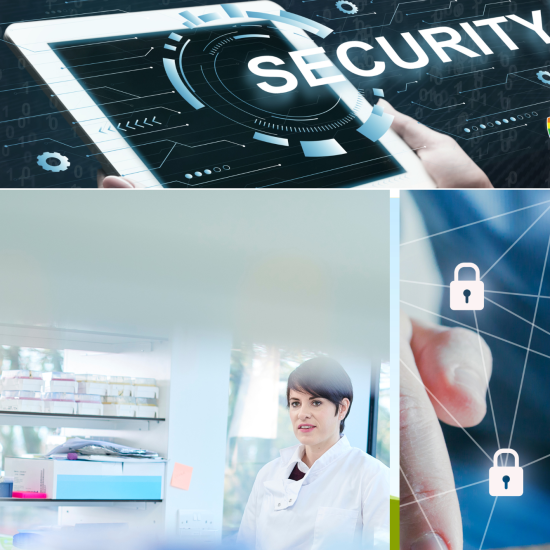The Emergence of Automotive Hacking: Tips for Securing Your Vehicle
The automotive industry is in a state of transformation. Self-driving cars are already on the roads, smartphones are now keys, and auto-braking systems prevent accidents. As technology continues to penetrate the automobile industry with wireless communication, information technology, and the Internet of Things (IoT), vehicles are becoming more modern, comfortable and safer. However, while technology improves road safety, it also makes vehicles more susceptible to cyber-attacks. The more gadgets connected to a network, the more reasons there are for hackers to exploit them.
In this article, you will read about:
What is Automotive Hacking?
Perils of Automotive Hacking
The Importance of Addressing Automotive Hacking Risks and Consequences
Innovative Cybersecurity Measures in Response to Industry Challenges
The Importance of Consumer Awareness and Empowerment for Automotive Cybersecurity
Consumer Advocacy for Better Vehicle Security
Preventive Strategies for Dealing with Hacking
Future Trends and Challenges in Automotive Cybersecurity
How can Rainbow Secure help?
What is Automotive Hacking?
Automotive hacking refers to unauthorized access to a vehicle’s hardware, software, and communication systems. Modern cars are controlled by computers, from vehicle controls to infotainment devices. These computers, known as Electronic Control Units (ECUs), communicate with one another via various communication protocols and networks. An average modern car has over 100 ECUs and countless lines of code, making it an open invitation to hackers to take full control of the vehicle.
Perils of Automotive Hacking
The risk of automotive hacking is that it has the potential to entirely destroy a vehicle’s security measures, render it inoperable, make changes to features such as the alarm system and the oil change reminder, or disrupt the air conditioning or heating system. When hackers gain access to the key fob, they can control the car doors and ignition. Imagine if the car suddenly comes to a stop, or the doors open and close all by themselves! Hacking the car’s computer system gives the hacker power over the throttle and brakes, causing the vehicle to either accelerate quickly or turn off completely. Another danger is data theft. If your car has connected automotive apps, cyber attackers may gain access to passwords, driving records, bank data, or credit card information. Rental car companies have also gained unauthorized access to users’ personal information in some situations. USB data ports and infotainment systems are standard amenities in modern vehicles, but they are susceptible to malware or software code tampering, making them vulnerable. Telematics technology is placed in all fleet vehicles (such as taxis and shuttles) to monitor and gather vehicle data, but hackers can quickly exploit this system to obtain personal and vehicle information.
The Importance of Addressing Automotive Hacking Risks and Consequences
Automotive hacking is a serious concern that goes beyond just mere inconvenience. It poses significant safety risks and privacy concerns, especially as vehicles become more connected to the internet and other devices. Automotive hackers can exploit vulnerabilities in a vehicle’s software to access its data and systems and perform a range of unauthorized actions, including disabling safety features, controlling acceleration or braking, and even causing accidents. They can also steal sensitive information, such as GPS data, driving patterns, and vehicle registration details, which can lead to identity theft and financial fraud.
The implications of automotive hacking are particularly worrying for autonomous vehicles, which rely on sophisticated software and communication systems to operate. As such, they present an attractive target for hackers seeking to exploit vulnerabilities. A cyberattack on an autonomous vehicle could result in catastrophic consequences, including losing control over the vehicle and endangering passengers and other road users. Thus, ensuring the security of autonomous vehicles is crucial to gain public trust and ensure the safe adoption of this technology.
Automakers and other stakeholders also face significant financial and reputational damage due to automotive hacking. A security breach can result in costly recalls, legal liabilities, and damage to brand reputation. For example, Toyota suffered a data breach that exposed the personal information of 3.1 million customers, which led to a loss of consumer trust and decreased market share. Additionally, hackers may engage in financial fraud or ransom the stolen data, resulting in further financial burdens for affected parties. Thus, automakers must invest in comprehensive cybersecurity measures, including conducting vulnerability assessments, regularly updating software, and implementing multi-factor authentication and encryption to secure communications.
As automotive technology continues to evolve, addressing the risks and consequences of automotive hacking is critical for ensuring safety, privacy, and consumer trust in the automotive industry.
Innovative Cybersecurity Measures in Response to Industry Challenges
Today, the automotive industry faces increasing threats from hackers, requiring automakers to implement effective cybersecurity measures that protect vehicles and consumers. The following measures are among those being implemented:
- Segmentation and Isolation: Automakers are creating segmented and isolated networks within vehicles to prevent unauthorized access to critical systems. This ensures that an attack on one subsystem does not compromise the entire vehicle.
- Hardware Security Modules (HSMs): HSMs are integrated into vehicles to provide cryptographic services, secure key storage, and authentication. They help ensure the integrity and confidentiality of data exchanged within the vehicle and with external systems.
- Secure Boot: Secure Boot is a feature that verifies the authenticity and integrity of software and firmware during the vehicle’s startup process. This prevents malicious software from being loaded onto the vehicle’s systems.
- Penetration Testing: Regular penetration testing helps identify and address vulnerabilities in-vehicle systems. This proactive approach helps detect security weaknesses before hackers can exploit them.
Ethical hacking and bug bounty programs are indispensable in identifying and addressing vulnerabilities in automotive systems. Ethical hackers, also known as “white hat” hackers, are cybersecurity experts who test and assess system security lawfully and responsibly. Automakers and suppliers collaborate with ethical hackers through bug bounty programs, which offer financial rewards for identifying and reporting security vulnerabilities. These programs help uncover vulnerabilities that may have been overlooked during development and testing phases, allowing automakers to address them promptly.
Secure software updates, encryption, and intrusion detection systems are also crucial in automotive cybersecurity:
- Secure Software Updates: Automakers implement over-the-air (OTA) software update mechanisms that allow vehicles to receive security patches and feature enhancements remotely. This reduces the need for physical dealership visits and ensures vehicles are equipped with the latest security protections.
- Encryption: Encryption is critical for protecting data transmitted between vehicles, servers, and external devices. Automakers can prevent eavesdropping and unauthorized access to sensitive information by encrypting data.
- Intrusion Detection Systems (IDS): IDS are deployed in vehicles to monitor network traffic and detect suspicious or malicious activity. IDS can alert drivers or vehicle systems to potential cyberattacks and trigger countermeasures to protect the vehicle.
The automotive industry’s investment in cybersecurity innovations demonstrates its commitment to building and maintaining consumer trust. As vehicles continue to integrate advanced connectivity features, these cybersecurity measures will play an even more critical role in securing the future of transportation.
The Importance of Consumer Awareness and Empowerment for Automotive Cybersecurity
As vehicles become more technologically advanced, they also become more vulnerable to cyber threats. While automakers and cybersecurity experts work to protect vehicles from hacking, it’s equally important for consumers to take responsibility for safeguarding their own safety and privacy. Understanding the risks of automotive hacking, the tactics used by hackers, and the steps to take in the event of a cyberattack is crucial. By being informed, consumers can take proactive measures to protect their vehicles and data, recognize potential threats, and make informed decisions about the connected features they use.
Practical Tips for Vehicle Owners to Protect Against Hacking Attempts:
- Keep Software Updated: Make sure your vehicle’s software and firmware are up-to-date. Install manufacturer’s over-the-air (OTA) updates and security patches promptly.
- Secure Key Fobs: Store key fobs in secure places, such as RFID-blocking pouches, to prevent signal interception and relay attacks. Avoid leaving key fobs in unsecured locations or near external doors and windows.
- Use Secure Wi-Fi Networks: Connect your vehicle to secure and trusted Wi-Fi networks. Avoid public Wi-Fi hotspots for vehicle connectivity, as they may be more vulnerable to cyberattacks.
- Limit Data Sharing: Be mindful of the data you share with third-party apps and services connected to your vehicle. Review privacy settings and limit access to personal information and location data when possible.
- Be Vigilant: Pay attention to any unusual behavior or warning signs in your vehicle, such as unexpected changes in settings, unusual alerts, or unauthorized access to features. Contact your vehicle manufacturer or dealership for assistance if you suspect a cyberattack.
- Internet Access via VPN: Wireless gadgets are highly vulnerable to cyber-attacks because they are often used online, making them more accessible to hackers. A Virtual Private Network (VPN) is highly recommended as a substitute. VPN has proven to be an effective method of securing automobile gadgets, engines, and electronic components from external virus threats.
- Strictly Need-Basis GPS: General Positioning Systems (GPS) spoofing makes it easy to hack automobiles. This method interferes with the GPS location system by using radio transmission. Turning off GPS when it is unnecessary is recommended.
- Install a Firewall: Malicious code and data packets are frequently sent to a vehicle as the first stage of a cyberattack. To prevent hackers from attacking the internal network of the vehicle, it is recommended that the vehicle has a built-in firewall. An effective firewall will restrict vehicle-to-vehicle (V2V) and vehicle-to-everything (V2X) communication to authorized parties only.
- Manufacturer-endorsed Software Only: When customizing your vehicle, only use software that has been approved by the manufacturer. Third-party programs can expose your vehicle to risk.
These measures, combined with other security precautions, help detect, assess, treat, and report security issues.
Consumer Advocacy for Better Vehicle Security
Consumers should advocate for better vehicle security by engaging with automakers and industry stakeholders. This includes providing feedback on security features, discussing industry standards, and advocating for greater transparency and disclosure of cybersecurity practices. Consumer advocacy helps drive industry improvements, promotes best practices, and shapes the development of new technologies with security and privacy in mind. Ultimately, an informed and engaged consumer base is valuable in enhancing vehicle security and building trust in the age of connected and autonomous vehicles.
Preventive Strategies for Dealing with Hacking
The rise of connected and driverless cars has caused significant disruption, with their convenience and benefits making them increasingly popular. However, as these vehicles become more common, cybersecurity concerns are becoming a pressing issue. In fact, according to Upstream, automotive hacks have increased by 225 percent between 2018 and 2021, with about 85 percent of intrusions being remote attacks. Adopting zero-trust-based cybersecurity principles can mitigate the risks and protect networks and devices from potential hacks. This approach ensures quick recovery in the event of an incident and helps maintain cybersecurity.
Future Trends and Challenges in Automotive Cybersecurity
As the automotive industry continues to evolve, cybersecurity remains a critical concern. Here are some of the most pressing issues and potential solutions:
- The Security of Autonomous Vehicles: Fully autonomous vehicles rely on complex algorithms and real-time data processing for safe operation. Ensuring the integrity of sensor data, communication channels, and decision-making algorithms will be critical to prevent malicious interference.
- Supply Chain Security: With various suppliers contributing components and software, securing the automotive supply chain becomes increasingly important. Addressing vulnerabilities that may arise from third-party components and ensuring that all suppliers adhere to rigorous security standards is vital.
- Data Privacy and Regulation: The collection and analysis of vehicle-generated data raise important questions about data privacy and ownership. Balancing the need for data-driven innovation with consumer privacy protection and compliance with data protection regulations is a challenge.
- Integration with Smart Infrastructure: Securing the broader ecosystem will be challenging as vehicles become more integrated with intelligent transportation infrastructure. This includes securing vehicle-to-infrastructure (V2I) communication and ensuring the resilience of transportation networks.
The automotive industry must remain vigilant in the face of emerging cybersecurity threats. By taking a proactive approach and staying ahead of potential vulnerabilities, the industry can continue to innovate while keeping drivers and passengers safe.
As technology drives innovation in the automotive industry, new opportunities and challenges will emerge. It is vital to secure vehicles in an increasingly connected world, as the safety, privacy, and trust of consumers are paramount. This shared responsibility requires vigilance, adaptability, and collaboration.
Securing the automotive future is a collective effort that calls for the active participation of all stakeholders. Automakers must commit to implementing cutting-edge cybersecurity measures and continuously adapt to emerging threats. Regulators must provide clear guidance and standards to foster a secure and resilient automotive ecosystem.
Consumers must be informed and empowered to advocate for better vehicle security and take proactive measures to protect themselves. Through this collaborative and determined effort, we can drive toward a safer, more secure, and more connected automotive future where technology benefits can be fully realized without compromising our safety and well-being.
How can Rainbow Secure help?
Right amount of data and system access to right person or role at right time is the key to organizations being able to use digital tools and platforms to serve the customer base and stay compliant.
Next Generation Rainbow Secure platform is a modern identity authentication (MFA) and single sign- on (SSO) solution for your business across on-premises and cloud environments. It’s backed by an experienced team of cloud and security experts, years of innovation, and partnerships with leading cloud platforms. Rainbow Secure is a Leader in Smart and Secure Digital Solutions that work for you.
Insider Threats: Rainbow Secure assists in mitigating insider threats by implementing access controls, user monitoring, and privilege management solutions. Also, if the user leaves behind unlocked devices, saved passwords in the password manager or browser can be misused by malicious insiders. Interactive login security from Rainbow Secure helps prevents unauthorized access and protects against data theft or misuse by privileged users.
ChatGPT Security for business: Secure your ChatGPT login and Data with Rainbow Secure MFA Plugin.
Secure AI Integration: Consult Rainbow Secure Team to integrate AI in your business workflows powered by Azure and Rainbow Secure API.
Secure Workforce & Customer login: Use Authentication Plug-in by Rainbow Secure to secure workforce and customer logins. In this plug-in, you get a multi-dimensional password, passwordless login solutions with AI monitoring, Risk Analytics, and location fencing.
IoT Friendly Security: IoT platform developers can secure their cloud endpoints, and user logins (both admin and customer) against unauthorized access and scripted malware attacks using easy to adapt and support multi-layer interactive rainbow secure authentication solutions and services that includes but not limited to security assessment, API Security, secure user onboarding, and risk analytics.
Secure Data and its Backups We provide Cloud based data vault and data archive solutions backed by Microsoft Azure and secured by our authentication plugin and industry best practices to give you ransomware protection, help with data governance and disaster mitigation.
Database Security We provide technical consulting services to Secure Databases in cloud and on premise. You get best protection for your data in databases using native and third-party security tools.
Meet Compliance Requirements: Use Authentication Plug-in by Rainbow Secure with your business application and in SSO (Single Sign-on) and meet industry standards and compliance regulations such as NIST, ISO, FTC, SOX, SOC2, CMMC, CMMI, HIPAA, PCI, and others.
Securely communicate and Collaborate: Use Secure Business Email by Rainbow Secure and get protection against account takeover, phishing, ransomware, and automated login cyber frauds. In this email, you get options to send encrypted emails, single sign-on with Office 365, and Google, and 1 TB one drive storage.
Connect Business applications: Get one unified login using Rainbow Secure Single Sign-On
Manage User Onboarding / Offboarding using Rainbow Secure IAM
Verify User using Smart Multi-factor MFA. Smart Multi-Factor Authentication from Rainbow Secure which adjusts to your use case, reduces the cyber liabilities of a business from stolen credentials and improves productivity, and enhances user experience.
Do you have more questions about how Rainbow Secure’s innovative modern identity authentication (MFA) and single sign- on (SSO) solutions safeguard your business and enhance user productivity for your business across on-premises and cloud environments? Contact us today. Email us at Hello@rainbowsecure.com







